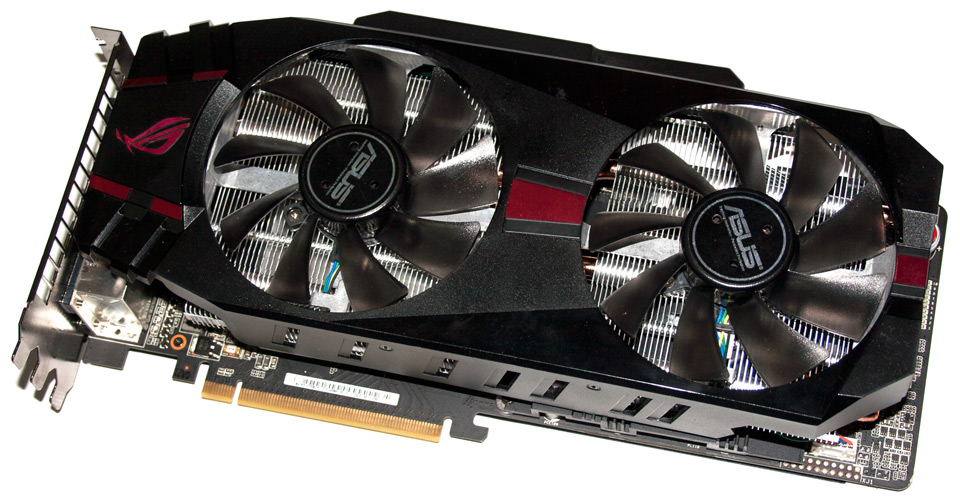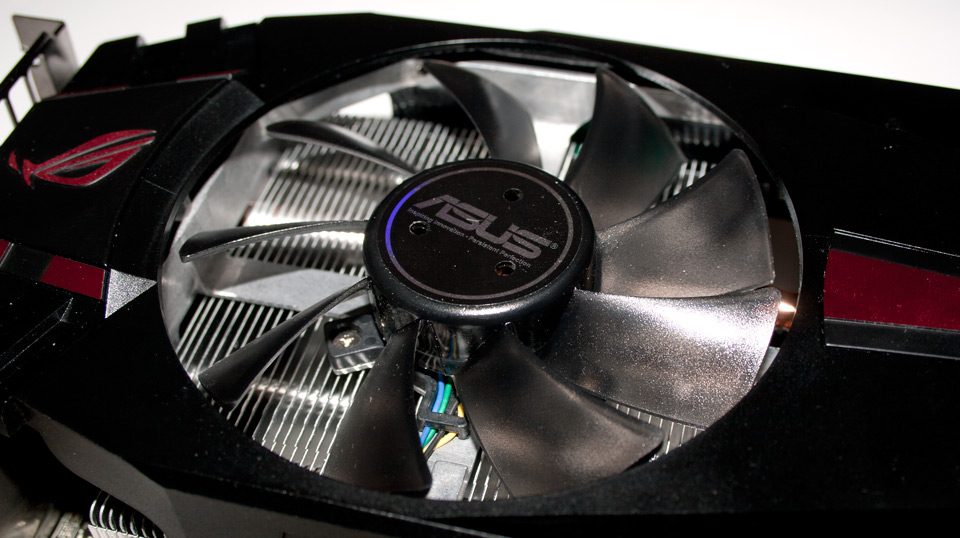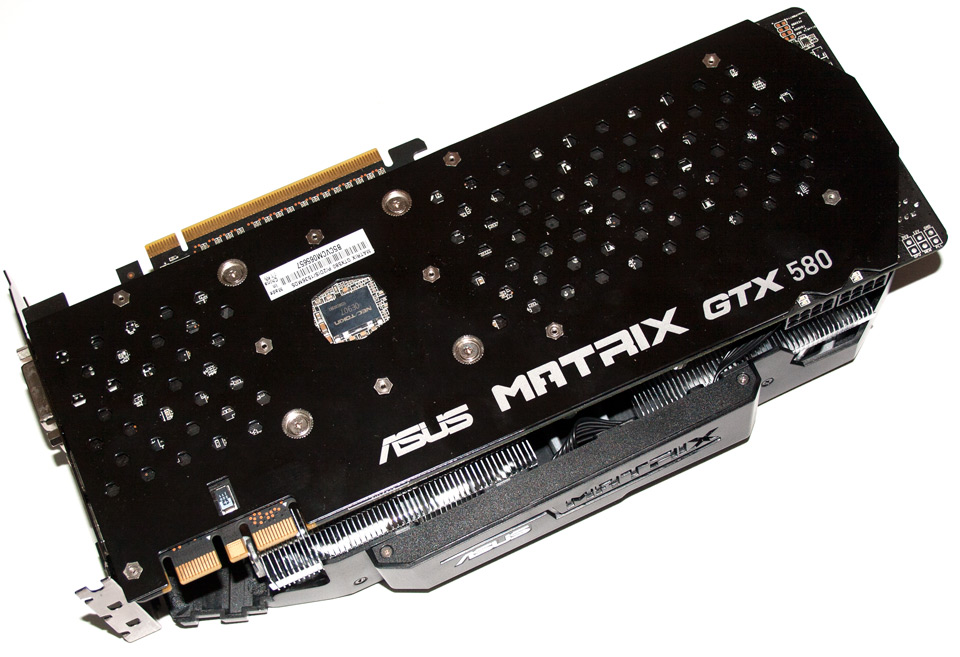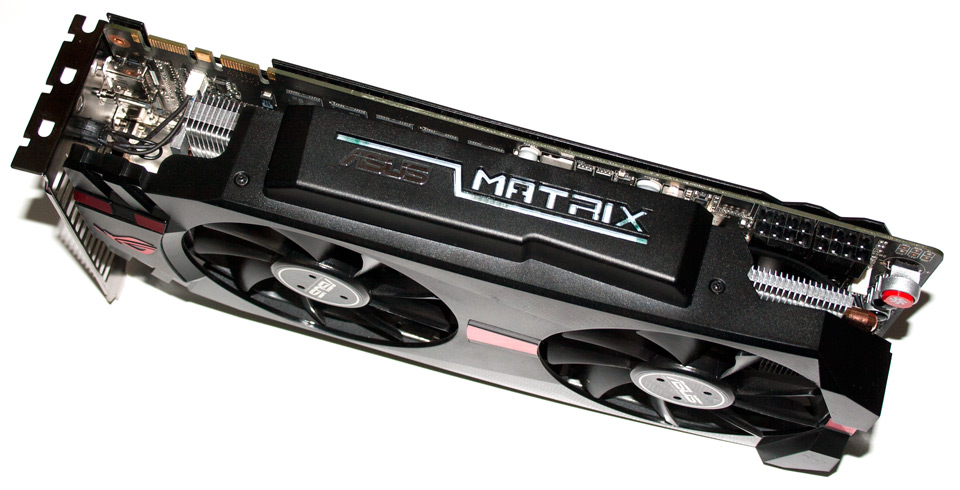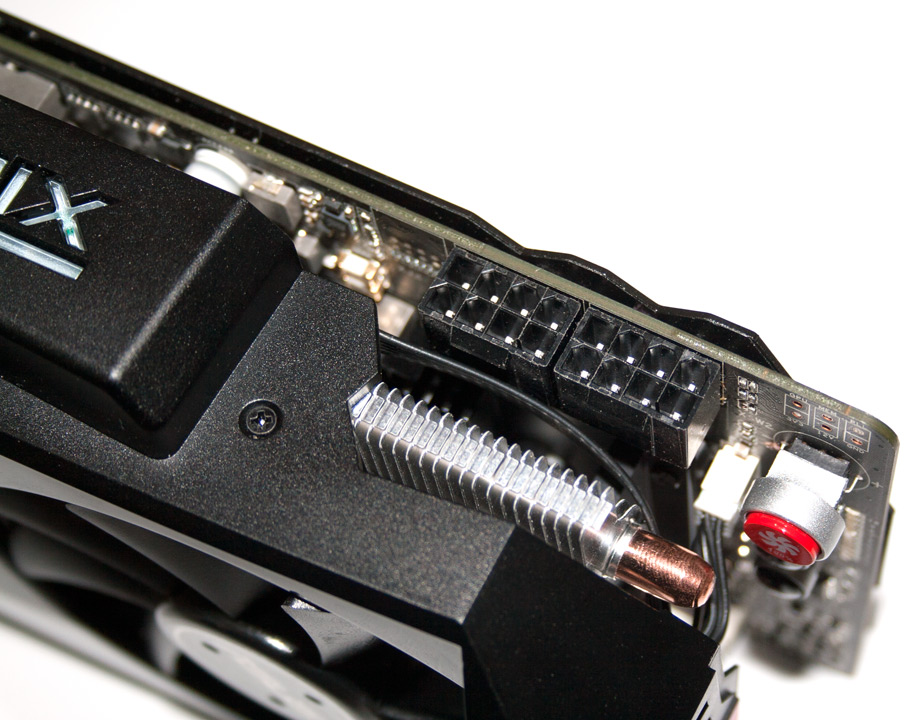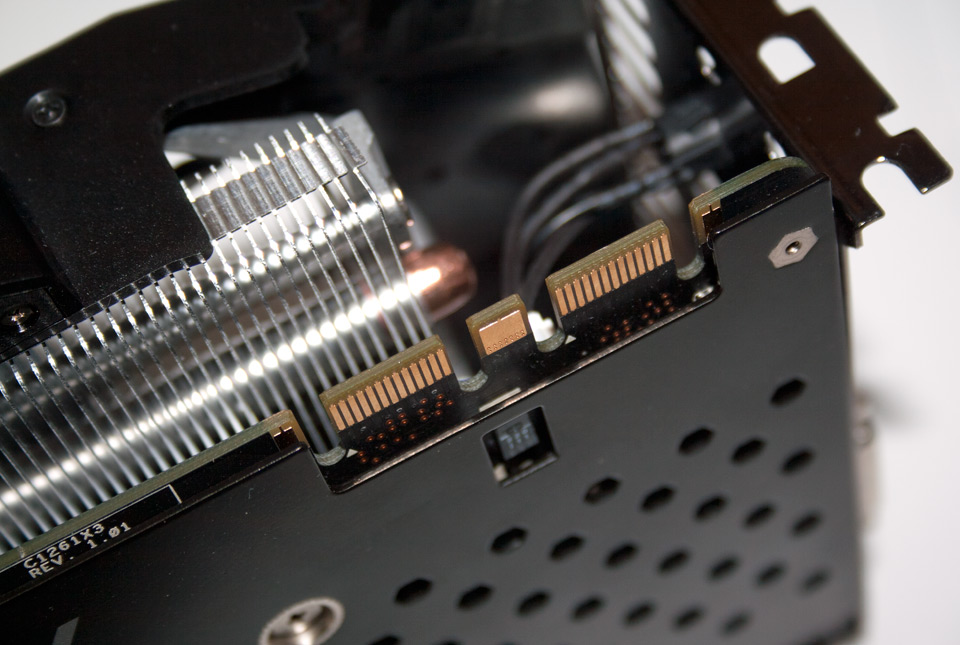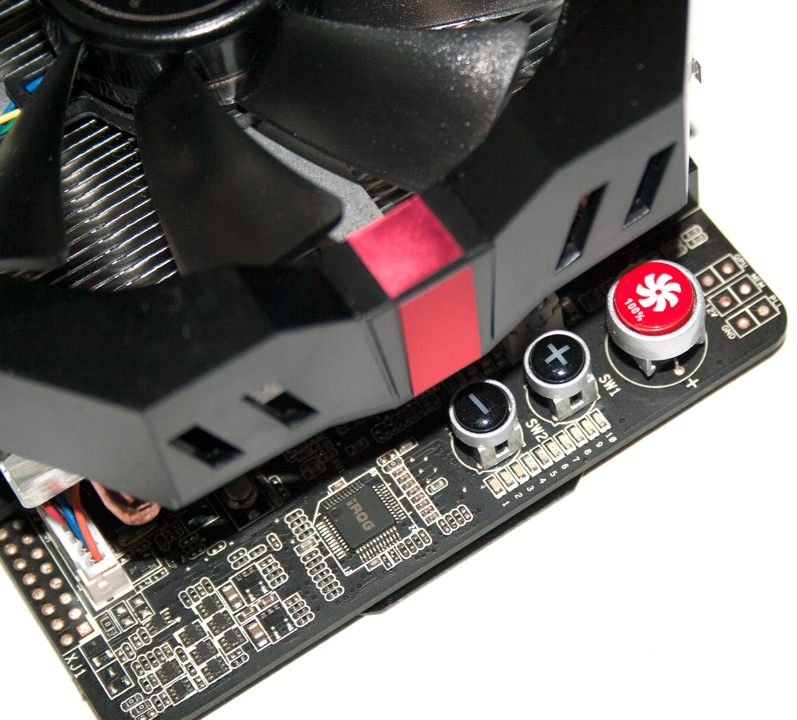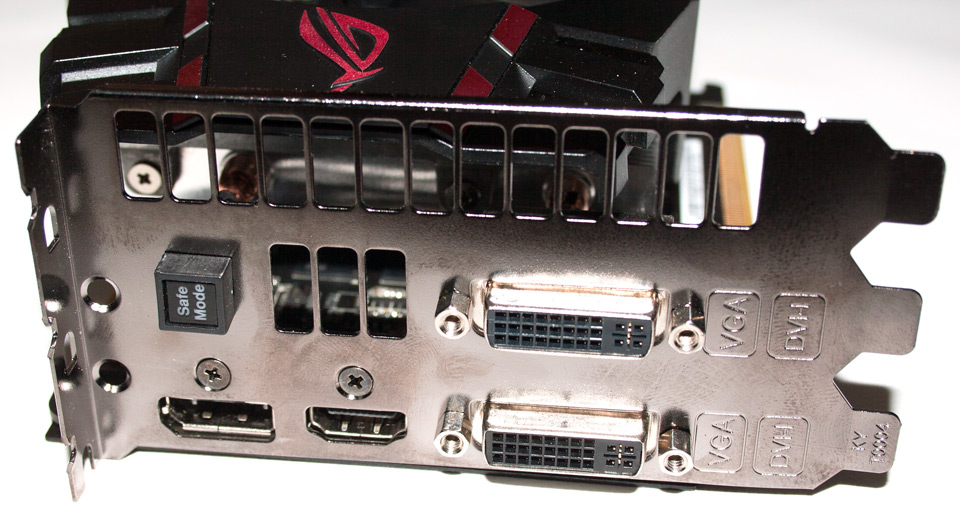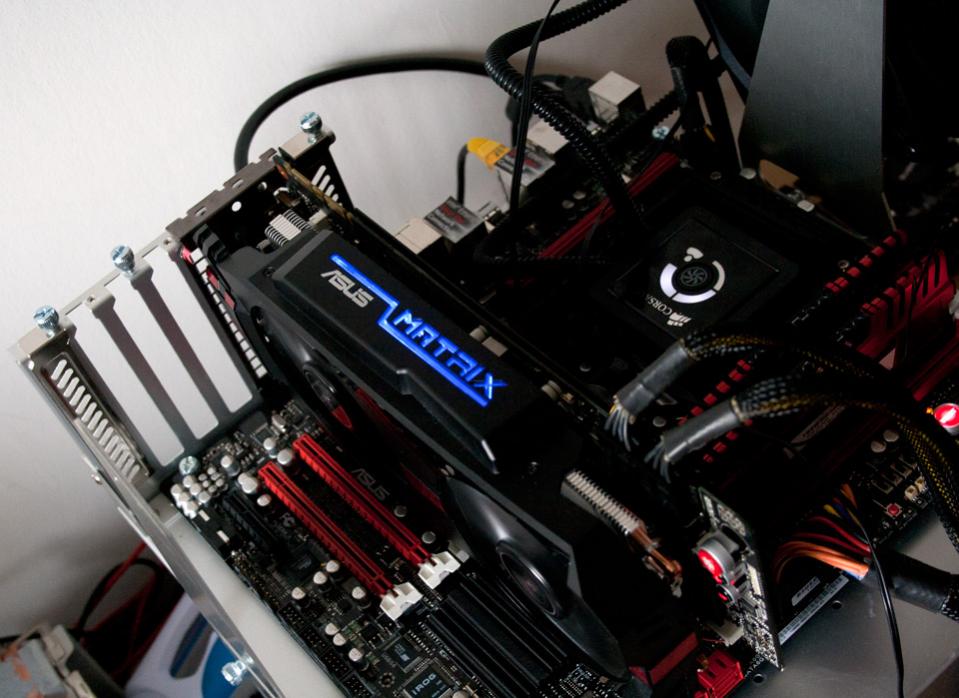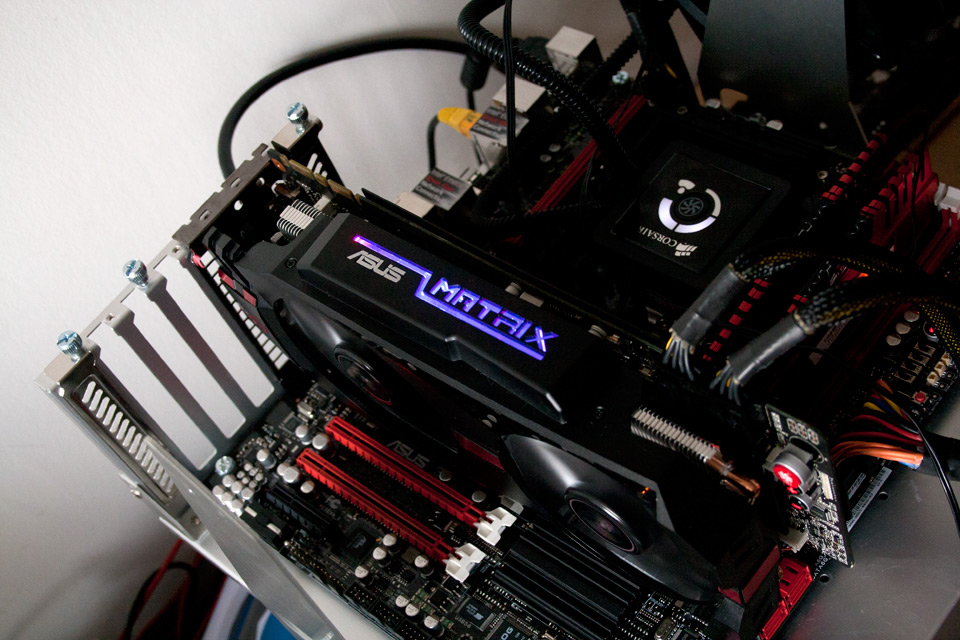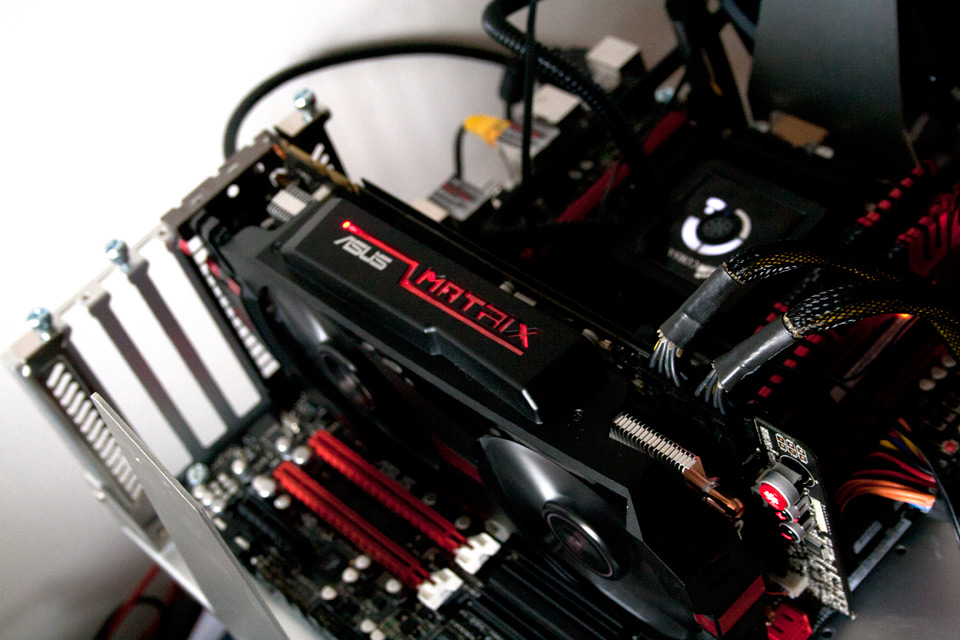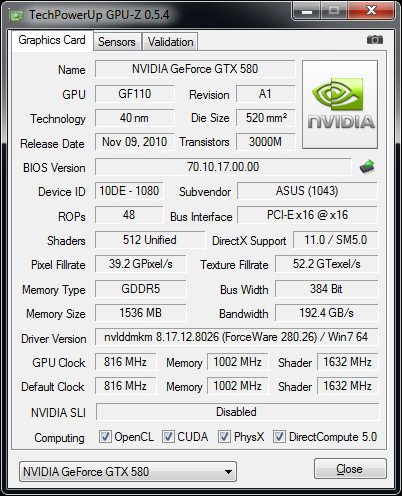Asus GeForce Matrix GTX 580 Platinum 1536MB Graphics Card Review
Andy Ruffell / 13 years ago
The card from first glance is absolutely huge and features the DirectCUII patented cooler that we’ve seen on other cards in the Asus range of graphics products. The cooler has been beefed up slightly and takes up three expansion slots in your chassis as well as featuring two Asus branded fans.
The fans measure in at 100mm each and include smoked fans to follow the styling of the rest of the cooler.
The rear of the card is covered by a huge back plate with the model name printed upon. The only real aspect of the card that isn’t covered is an NEC chip that is situated towards the middle of the card. What this chip does is helps to provide power to the cards GPU which is situated in line with the chip allowing for little to no power loss which in turn should in theory assist in gaining better overclocks.
The top of the card has quite a unique little feature with the Matrix logo that pans across the majority of the cooler. When the card is in use, the Matrix logo lights up, and dependant on how stressed the card is, the colour will change.
Due to the extra power capabilities that this card has available to the user in terms of overclocking and voltage tweaking, more power is required from the power supply and therefore the card needs two 8-pin PCI-Express power adapters.
Also along the top of the card are two bridge connectors for some serious SLI action. By having two connectors it allows you to connect another two GTX 580 cards in Tri-SLI action. If you are looking at running multiple cards, we do suggest getting the appropriate length SLI connectors due to the fact that this card takes up three expansion slots.
A few of the unique features that the ROG team have implemented into this card are situated towards the end of the card which is all part of the voltage tweak and overclocking settings. This includes six solder points for hardcore LN2 users to adjust voltages further than usual. For the average user the plus and minus buttons are used to increase and decrease the voltage to 1.25V whereas the Asus software only allows you to push the voltage to 1.15V. The big red button that sits above the voltage buttons simply places the fans onto 100% mode to give the most extreme cooling, which is needed when increasing the voltages.
Another feature that links in with all of this is the Asus Probelt which allows you to obtain an accurate voltage reading which we’ve seen Asus and the ROG team implement onto their high-end motherboards. By using Probelt, you are able to take readings from the GPU, memory, PLL and even the PCI-Express voltages. These won’t mean a lot to most users but for extreme overclockers, these are much needed features and Asus have realised that.
The rear I/O on this card is simply epic and that is the only word that can describe it, as it just puts the size of the card into perspective. and reveals yet another unique feature to this card. There are three expansion slots of which the top one includes ventilation ports for improved airflow whilst the other two slots have the various connections. The card includes two Dual-Link DVI ports, HDMI port and DisplayPort which also opens up the doorway for multiple display configurations.
Another added extra on the rear is the Safe Mode button which works very much like a reset CMOS button and allows you to reset all settings back to default, just incase you pushed it a bit to far past where the card wanted to be.
As said earlier on, the card has a Matrix logo on the top of the card which is backed up with some LEDs to notify you what kind of stress the card is under. When idle the Matrix logo will sit a comfortable green, but different stages of the card being loaded will make the logo glow a different colour. Light loading will glow a light blue colour whereas a medium load will force the card to glow a darker blue.
When a bit more load has been passed through the card, it will glow purple.
If you are pushing the card to its limits, you will notice the logo glows a red to show that its in EXTREME mode and is being loaded to the max.
The specifications on the card are taken up slightly from the reference clock speeds. From the stock 772MHz we find the GPU clock has been ramped up to 816MHz whilst the memory clock has remained the same at 1002 (4008MHz effective). Obviously through use of overclocking, you will be able to pump this up a bit more if you so wish.
